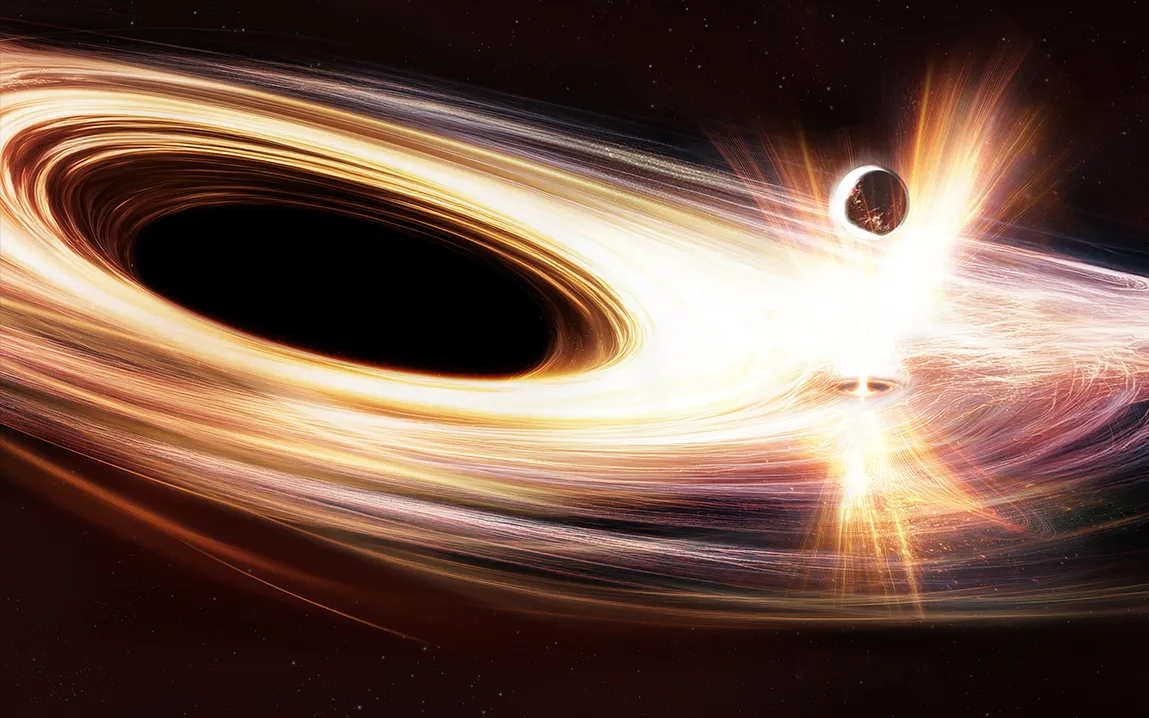A gigantic black hole, hidden in a distant galaxy within the Virgo constellation, is waking up, and it’s putting on quite the show for astronomers.
The galaxy, called SDSS1335+0728, located around 300 million light-years from Earth, was previously quiet and uneventful. But in 2019, it suddenly lit up, drawing the attention of telescopes worldwide. Then in February 2023, astronomers in Chile spotted something even stranger. The repeated bursts of powerful X-rays coming from its center.
The black hole’s new nickname: Ansky
This galactic revival prompted astronomers to redefine the center of this galaxy as an “active galactic nucleus,” which is henceforth lovingly referred to by scientists as “Ansky.” It is presumed to be a supermassive black hole, the type usually silently residing in the middle of most galaxies, including our home Milky Way galaxy.
But lately, Ansky isn’t so quiet.
“This rare event provides an opportunity for astronomers to observe a black hole’s behavior in real time,” said Lorena Hernandez-Garcia, an astronomer at Valparaiso University in Chile.
The X-ray bursts, known as quasiperiodic eruptions (QPEs), are puzzling experts. These kinds of flares are thought to happen when a black hole forms an accretion disk after swallowing a star. But in Ansky’s case, there’s no evidence of a recent star being devoured.
Bigger, brighter, and weirder than expected
What makes Ansky stand out is just how extreme its X-ray eruptions are. Each blast is 10 times longer and 10 times more powerful than typical QPEs, and they repeat every 4.5 days, which is the longest interval observed so far.
“Each of these eruptions is releasing a hundred times more energy than we have seen elsewhere,” said Joheen Chakraborty, a Ph.D. student at MIT.
“This pushes our models to their limits and challenges our existing ideas about how these X-ray flashes are being generated.”
What’s causing the flares?
Scientists have a few ideas. One theory is that the flares come from a disk of gas being sucked in by the black hole, and that the flares only occur when a small star or object crosses this disk at the right angle, without getting pulled in completely.
“Simply imagine a black hole and disk around it,” explained Norbert Schartel, chief scientist of ESA’s XMM-Newton telescope. “Now imagine the star crossing the disk twice every time it orbits—shooting out flares—but at a particular angle which means there is no real strong force to drag it in.”
But even with these ideas, there’s still a lot we don’t understand.
“For QPEs, we’re still at the point where we have more models than data,” said X-ray astronomer Erwan Quintin. “We need more observations to understand what’s happening.”
With multiple X-ray telescopes, including ESA’s XMM-Newton are now watching closely, scientists hope to uncover more about what’s causing Ansky’s wild awakening. For now, this cosmic mystery remains unsolved, but it could help us better understand how black holes behave when they stir from their long slumber.



